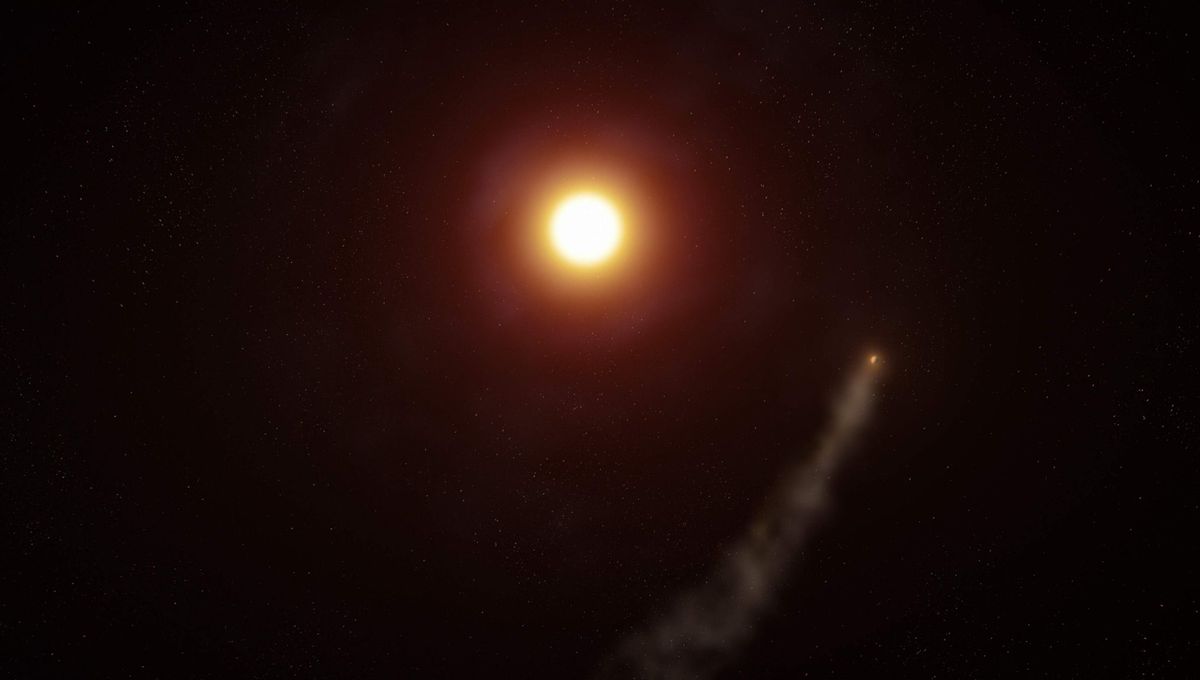
WASP-69b is an exoplanet that has just 30 percent of Jupiter’s mass, but is 10 percent larger. This world is dramatically puffed-up because it orbits very close to its star, completing an orbit in just 3.9 days. And its inflated layers are not staying put – the stellar wind is eroding them, creating a comet-like tail. The latest observations suggest that it is much longer than scientists had expected.
The tail extends for at least 580,000 kilometers (360,000 miles). It is composed mainly of helium, which the astronomers tracked with the Keck Observatory. The stellar wind sculpted the atmosphere escaping the planet into a long, wispy tail that can be seen clearly in infrared light.
“Previous observations suggested that WASP-69b had a modest tail, or no tail at all,” Dakotah Tyler, astrophysics doctoral candidate at UCLA and first author of the study, said in a statement. “However, we have been able to definitively show that this planet’s helium tail extends at least seven times the radius of the giant planet itself.”
The star WASP-69 is slightly smaller and cooler than the Sun, not that this is enough to stop it affecting the planet. The planet’s being cooked, and losing about one Earth’s worth of mass every billion years or so. These kinds of planets are very common in space and even planets in our Solar System, like Mars, experience atmospheric loss from the solar wind.
“The WASP-69b system is a gem because we are able to study its atmospheric mass-loss in real-time,” says co-author, Erik Petigura, associate professor of astronomy and astrophysics at UCLA. “This makes for a rare opportunity to understand the critical physics that shapes thousands of other planets.”
“These comet-like tails are really valuable because they form when the escaping atmosphere of the planet rams into the stellar wind, which causes the gas to be swept back. Observing such an extended tail allows us to study these interactions in great detail,” Petigura continued.
WASP- 69b has a dense and hazy atmosphere that is partially clouded. It is an extreme example of atmospheric loss and a tailed planet, but it won’t just evaporate away. The planet has 90 Earth’s worth of mass, so the star will destroy it by becoming a red giant in several billion years, rather than making it evaporate away.
The study is published in The Astrophysical Journal and was presented at the 243rd meeting of the American Astronomical Society.
Source Link: Massive Comet-Like Tail Stretching Over 500,000 Kilometers Discovered On Far-Away World